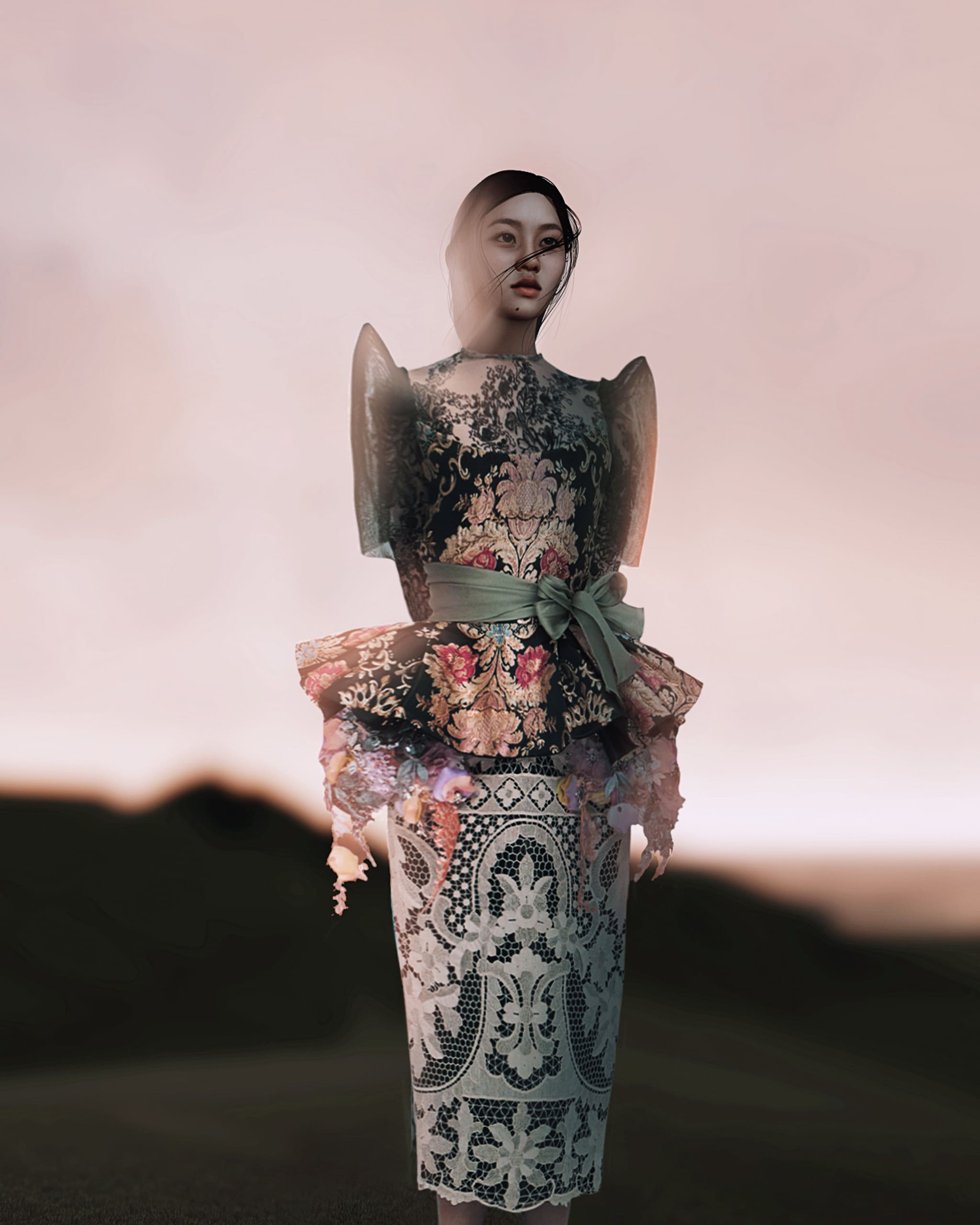Chapters PH
This issue’s theme of “Celebration” sees creatives from different corners of the globe come together to build a world for the future.
Crafting the Metaverse editorial of Vogue Philippines was an otherworldly feat—in that it required the team to step, for the first time, into the world of the virtual. The story started out with a fascination with the metaverse; a world beyond the physical, merging both real and virtual craftsmanship.
“Truth be told, this story has so many layers to uncover, in both real and metaphoric senses,” says art director Jann Pascua. “Whenever we think or visualize a metaversal world, our initial take would typically stem from a highly futuristic and digitized environment.” The challenge was how to put forward these ideas in a way that all readers could understand, especially with technology quite new to Filipinos.
“The concept seems so foreign and alien to so many people, and we wanted to have something that was familiar,” editor-in-chief Bea Valdes explains. “It is a fashion editorial, but it seems so much bigger than that.”
Running with the notion that “The metaverse is a place where you can dissolve and rebuild identity,” the Vogue Philippines team sought to bridge the familiar with the unfamiliar, and delve into ideas about what it means to be Filipino.
Fashion director Pam Quiñones tells us three questions were asked at the beginning, which rooted the succeeding efforts of the project: How can homespun craft be expressed in the metaverse, what place this has in a world of high connectivity and stimulation without tactility, and can its mark of identity and individuality crossover and be expressed in the realm of android dreams?
This led to the idea of placing the Terno at the forefront; a garment deeply representative of our Philippine history, alongside the familiar elements of Philippine topography, and models that hoped to represent the breadth of our identity. Thus, the narrative took its form. Titled “Paraiso” and carrying a theme of celebration, the story required a monumental and collaborative effort to pull these transcendental images together.
“In Paraiso, we take high craft in a digital world that is unfamiliar yet familiar. We imagine a metaverse that feels closer to what the Philippines is, which is paradisiacal,” says Quiñones. “Paraiso puts the spotlight on the upcoming TernoCon in January. It’s a way to take part in the dialogue of evolving our traditional dress to the present, and beyond.”
The Ternos pictured in the shoot were brought in by the design mentors and mentees with the assistance of TernoCon’s Gino Gonzales. Each artisanal piece was photographed by celebrity and fashion photographer Shaira Luna. Digital fashion platforms Lablaco and DRESSX were brought in to render the Ternos, which also proved to be a “fascinating and challenging” endeavor. The Lablaco team highlighted having to work layer by layer to accurately create our native garments for a project aimed at highlighting Filipino heritage, especially as intricate, couture pieces.
Next, social designer and world builder Bianca Carague stepped in, who is known for her project Bump Galaxy. This is a meditative and interactive virtual community space aimed at making therapy and specialists around the world more accessible to those that need it.
For Paraiso, Carague set out on designing what she describes as “what a virtual Filipino paradise might look like.” That involved delving deep into her own ideas of what it means to be Filipino and determining what elements most represent our culture and ideals. The idea was to craft a world reminiscent of our bucolic landscapes, a place that felt like home.
Digital designer Ivan Medrano was invited to bring the models to virtual life. His work spans 3D modeling, NFT minting, and rendering virtual fashion and art concepts that seek to push the boundaries of art as we know it. Medrano describes this project as something completely new to him. He experimented with AI software as a creative tool to render the models’ avatars.
“As a reflection of our inherent diversity, Ivan Medrano created three Filipina avatars archetypes,” Quiñones explains, “from an image generated by Artificial Intelligence that has been fed with a database of 1000 Filipina faces.” Through this project, an attempt was made, through new technology, to capture the incredibly diverse identity of the Filipino. “It’s a continuing conversation that we have about Philippine fashion identity and Filipino identity as a whole.”
When each element was finally completed, the team was able to play with the depth of the images. Vogue Philippines art director Jann Pascua explained that this benefit made the images feel more like real photographs rather than mere flat renders.
“Everyone was just so excited to be a part of it because it was so much bigger than a fashion story because it was really about the whole evolution of the Terno,” says Valdes. “The fact that it’s one example of Southeast Asian dress of national significance that does have western influence. And I think this idea of working with collaborators to express something so culturally important to us, was also a nice way of, iterating how inclusive the design of the Terno is.”
Though perhaps still some ways away from being integrated into the everyday lives of people, the result is a set of ethereal images that convey what’s possible for the next era of fashion and the metaverse, and what our future might soon look like.


















